| Topics |
|---|
| Charge Spillage Ghosts. |
Characterizing Ghost Image Artifacts.
The presence of ghost artifacts in ZTF data has been known for some time. Counter moving-ghosts have previously been quantified (see the ZSDF). However, ghosts due to other sources are still present.By inspecting ~350 raw quadrant images (including g,r, and i-band data) taken prior to Oct 1st 2019 (when a correction to the camera was implemented(?)) I have attempted to quantify the presence of charge spillage ghosts in order to mask them from archival data.
Charge spillage ghosts occur when the charge from a saturated pixel spills into other pixels as they are being read out. The readout and hence the spillage problem occurs at the amp level, so it occurs within quadrant images and can vary significantly even within the same CCD.
The charge that is spilt creates a ghost that is offset
from the saturated pixels by ~72% of the CCDs width
(this offset is set by the way that the charge is clocked
out of the CCD).
The effect itself wraps around when the saturated pixel is
closer than ~2280 pixels to the edge of the quadrant being
read. Thus two different types of offset ghosts can occur.
One that leads a saturated source by ~2280 pixels, or one
that lags it by ~870 pixels. Note, ZTF images are actually
3152 (3072+50+30) pixels wide when both the prescan and
overscan widths are considered.
The direction of these leading and lagging ghosts varies between quadrants 1 and 4, and 2 and 3 because the readout direction varies between them.
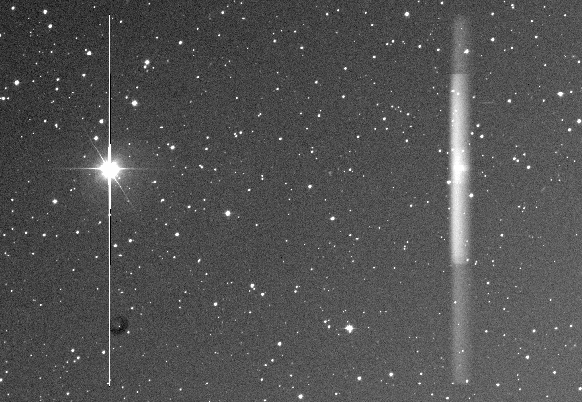
An example of a saturated star and its associated bright charge spillage ghost.
Inspecting the ~350 images it was found that the ghost images extend for the length of a column that is saturated, and are spread over a width of ~50 pixels centered on the ~2280 pixel offset. The ghost images are brighter when two or more adjacent pixels are saturated since there is more overflowing charge.
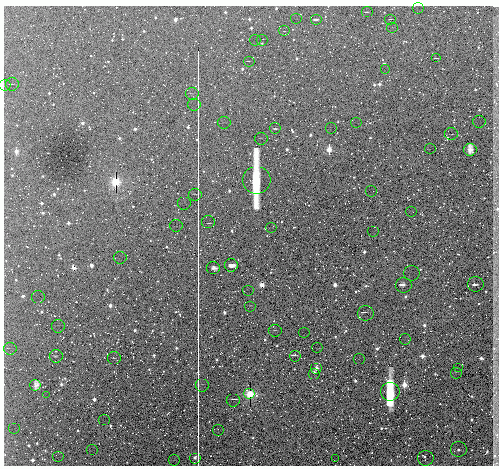
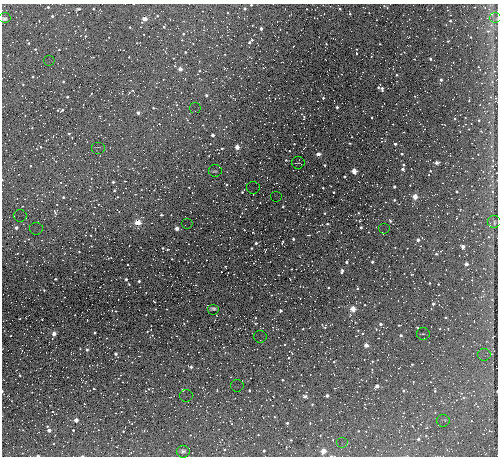
Examples of ghost image locations in two different quadrants. The locations of ghost image artifacts found in each image are marked with green circles.
The number of ghosts varies significantly between quadrants. Many quadrants have no obvious ghosts at all (although they may have if an extremely bright star is present). In the Figure above I show the locations of ghosts in two different quadrants. In the left image there are a number of bright ghosts, while on the right, most of the ghosts are faint and only become clear upon close inspection.
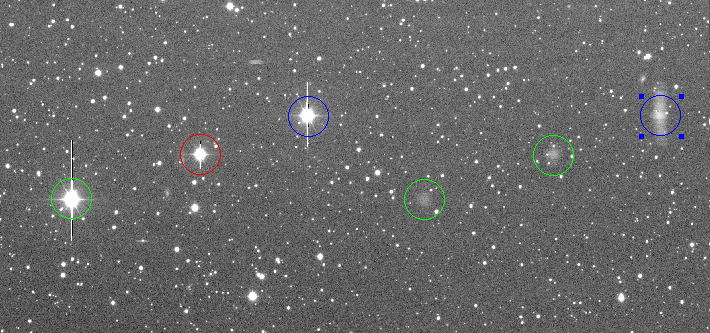
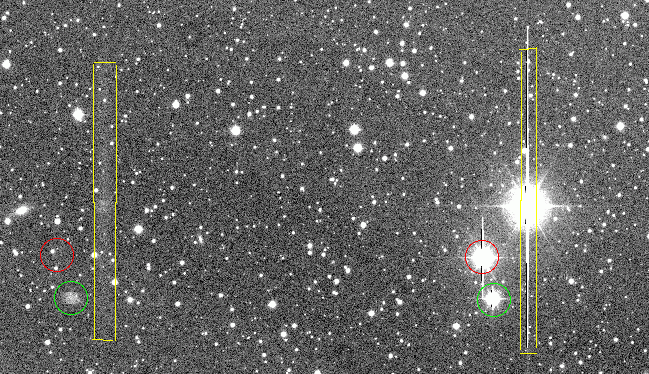
Variations in the occurrence of charge ghosts. The coloured regions mark the locations of the ghosts and saturated sources that are causing them with three different colours (the middle right circle in the upper image should be red).
The strength (amount of flux) of a ghost can vary significantly with location. In the the top plot above we show that the source marked with the blue circle has a much stronger ghost than the brighter source marked with a green circle. In some cases this variation is simply due to the charge being split across two pixel columns, so that neither is saturated, vs contained in a single saturated column. In the second plot above we show that the region marked with the yellow border has only a weak ghost and the red source has almost no ghost, while the fainter green star has a clear ghost. However, some variation is certainly dependent on the location within an image.

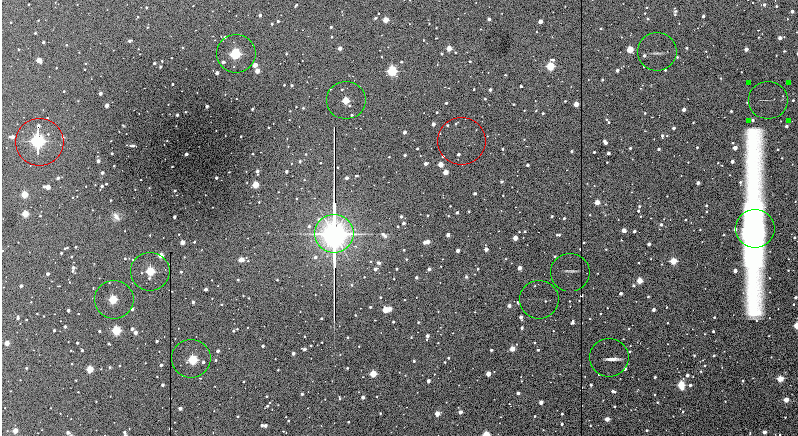
The presence of charge ghosts also depends on proximity to the edge of an image along the read direction. In the images above we show that saturated stars on the edges of images (red circles) have no clear ghost images, while those further from the edge do.
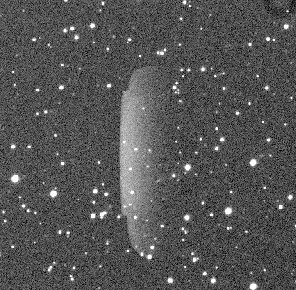
An exampled of a curved ghost image artifact from CCD 11 quadrant 4.
In most cases the ghost images are confined within a rectangular area with a width that is generally less than ~56 pixels. However, in a few cases the ghosts are noticeably broader or curved.
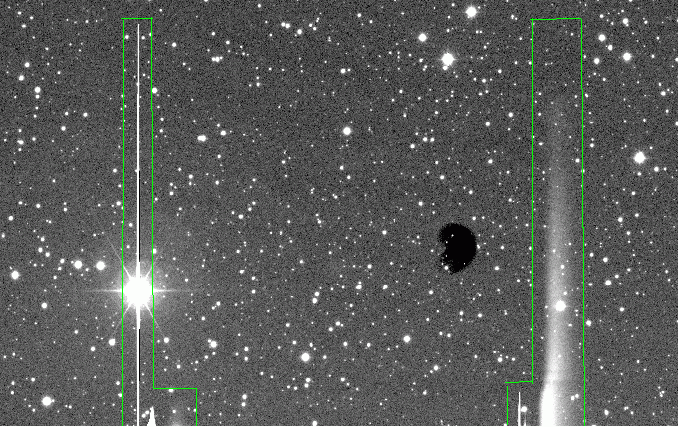
In cases where the saturated star is bright enough that the charge spillage reaches the edge of an image, the ghost region is distorted and additional ghost images are seen.